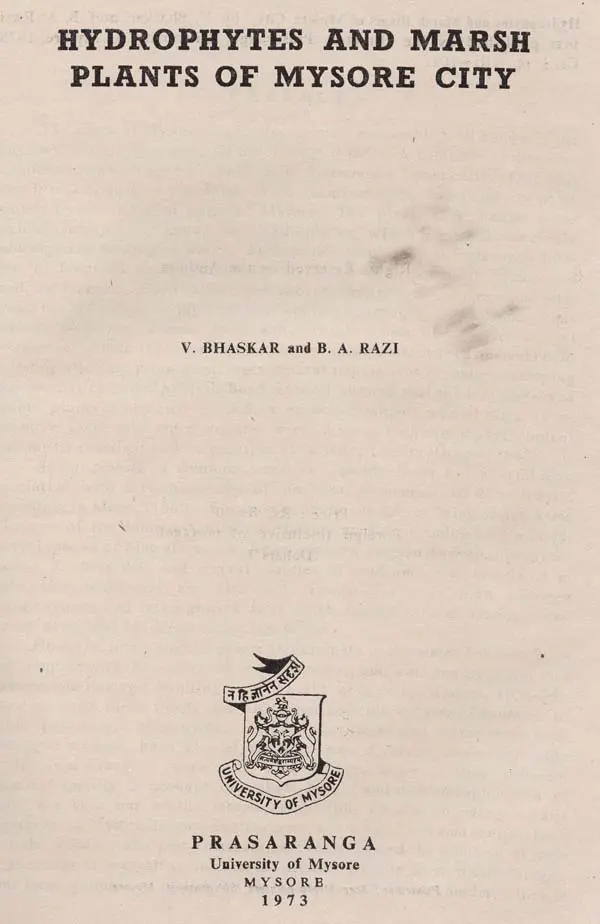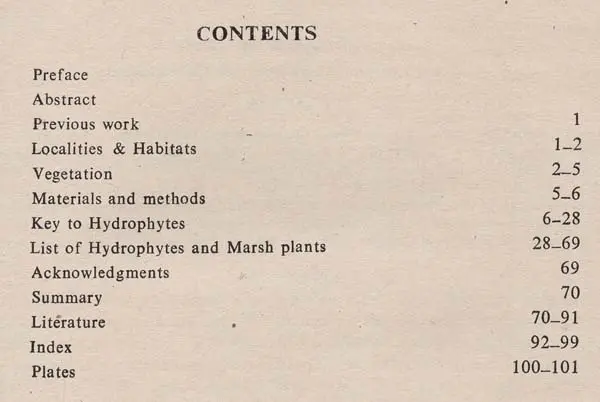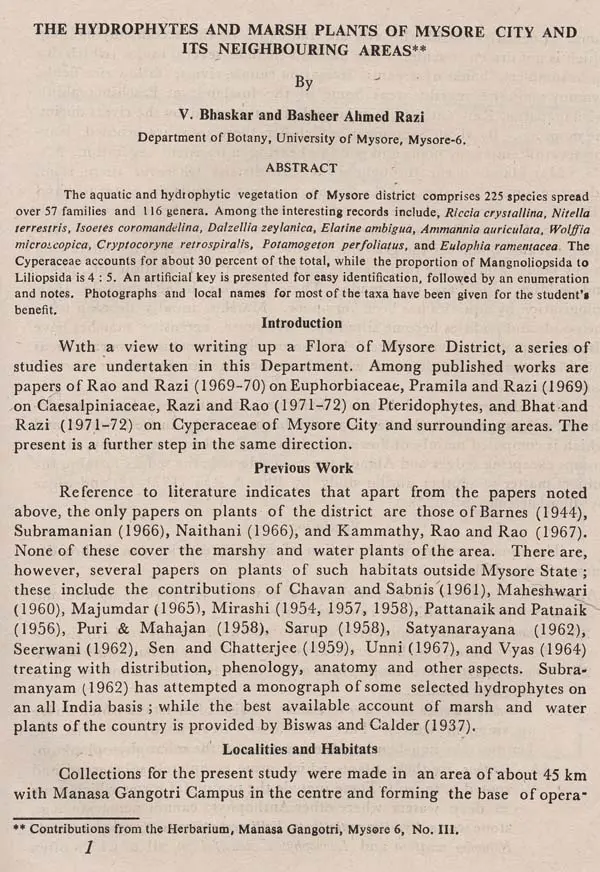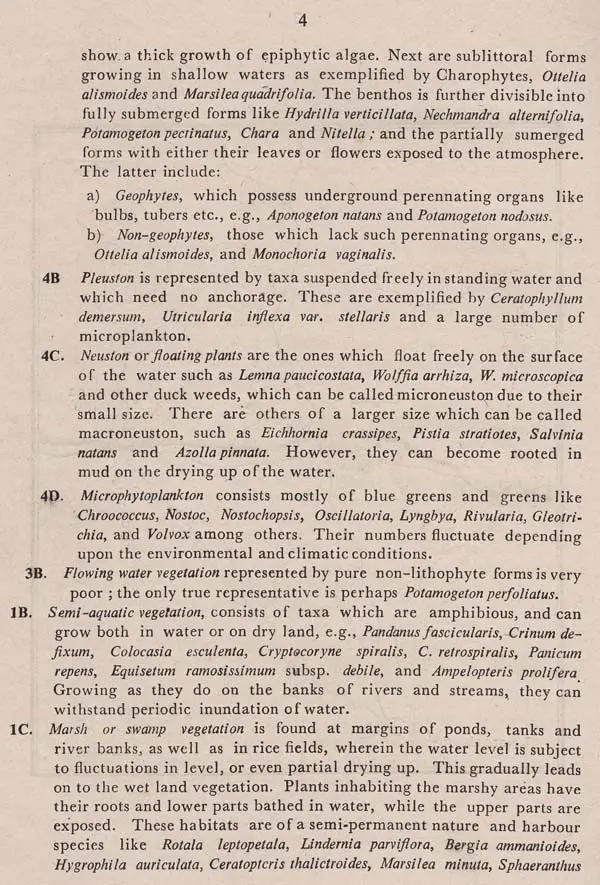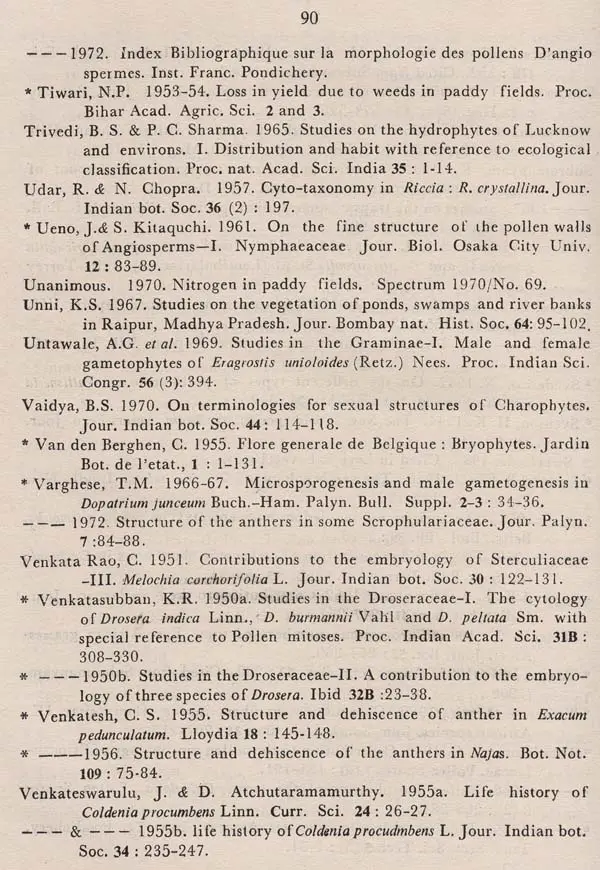
Hydrophytes and Marsh Plants of Mysore City (An Old and Rare Book)
Book Specification
| Item Code: | UAK009 |
| Author: | V. Bhaskar and B. A. Razi |
| Publisher: | University of Mysore, Mysore |
| Language: | English |
| Edition: | 1973 |
| Pages: | 110 (Throughout B/W Illusterations) |
| Cover: | PAPERBACK |
| Other Details | 9.50 X 7.50 inch |
| Weight | 200 gm |
Book Description
The Flora of Mysore district has become reasonably well known in the past five years. However, our floras are still far from complete as there are certain areas which have not been fully investigated botanically. One such flora is that existing in the marsh lands. ponds, streams, rivers and rice fields: scattered over different parts of Mysore. The plants that inhabit these regions are popularly known as "Hydrophytes" which live wholly or partly submerged or floating on water. Perhaps no other group attracts more inte rest of botanists than hydrophytes which serve as potential resources of food and manure. Boyd (1968) has proved that several species of aquatic plants could be used as high protein content roughages Typha, Najas, Pota mogeton, Eichhornia, Lemna, Azolla and several others often cover several hectares of ponds that the utilization of such water weeds as food could probably alleviate protein shortages in local populations of many developing nations. By chemical analysis Boyd himself showed that the leaf protein of aquatic plants can be used in human or non-riminent animal diets. Fur thermore, some submerged aquatic weeds have a high xanthophyll content and impart excellent yolk colouration when fed to poultry (Gregor, 1963). Azolla pinnata, a common weed in paddy fields has a symbiotic association with certain species of Anabaena, a member of Cyanophyta. According to Moore (1969), this association is capable of fixing atmospheric. Nitrogen of the same magnitude as Leguminous root nodules. In adition, several species of blue greens like Nostoc commune, Lyngbya dendrobia, Gloeotrichia natans, Rivularia dura and several species of Anabaena are associated in these rice fields and are also well known for their high nitrogen fixing capacity and large growth rate, which has made them ideally suited for use as natural fertilizers in the rice fields.
**Contents and Sample Pages**
